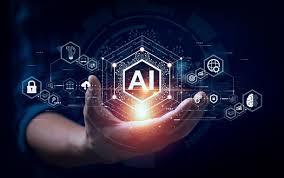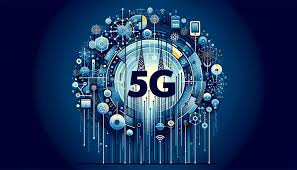The Impact of Technology on the Healthcare Industry: Trends and Innovations

Technology has significantly influenced healthcare, improving patient care, treatment efficiency, and overall system functionality. From telemedicine to artificial intelligence (AI) and electronic health records (EHR), the healthcare industry has embraced digital innovations to streamline processes and deliver better outcomes. In this article, we explore the key trends and innovations that are shaping the future of healthcare.
1. Telemedicine and Virtual Care
Telemedicine, the practice of providing medical care remotely via video, phone, or messaging, has seen an explosive growth, particularly in the wake of the COVID-19 pandemic. This technology has made healthcare more accessible, especially for individuals in remote or underserved areas. Some benefits of telemedicine include:
- Increased Access to Care: Patients no longer need to travel long distances to see a specialist. Telemedicine allows them to access consultations from the comfort of their home.
- Reduced Healthcare Costs: By eliminating travel and reducing the need for in-person visits, telemedicine helps lower healthcare costs for both patients and providers.
- Convenience: Patients can schedule virtual appointments during off-hours, making healthcare more flexible and accessible.
2. Artificial Intelligence (AI) in Healthcare
AI and machine learning are transforming healthcare by automating complex processes, improving diagnoses, and predicting patient outcomes. Some key applications of AI in healthcare include:
- AI-Assisted Diagnosis: AI algorithms can analyze medical data, such as medical images, to identify patterns and assist doctors in diagnosing diseases such as cancer, heart conditions, and neurological disorders.
- Predictive Analytics: AI can predict patient outcomes by analyzing past data and identifying trends, which helps healthcare providers make proactive decisions and reduce readmission rates.
- Personalized Treatment Plans: AI can help create individualized treatment plans based on a patient’s genetic profile, lifestyle, and medical history, ensuring that treatments are tailored to the specific needs of each patient.
3. Wearable Health Technology
Wearable devices, such as fitness trackers, smartwatches, and medical-grade monitoring tools, are becoming essential in the management of health and wellness. These devices track vital signs, activity levels, sleep patterns, and more, offering real-time insights that can be used for both preventive care and chronic disease management. Some notable benefits of wearable health technology include:
- Continuous Monitoring: Wearables provide real-time data, allowing patients and healthcare providers to monitor chronic conditions such as diabetes, hypertension, and heart disease.
- Improved Patient Engagement: Wearables encourage patients to take control of their health by tracking their progress and setting goals for physical activity, sleep, and overall wellness.
- Remote Monitoring: Wearables allow doctors to remotely track patients’ health metrics, reducing the need for frequent in-person visits and enhancing care continuity.
4. Electronic Health Records (EHR)
Electronic health records (EHR) have revolutionized how patient data is managed and shared among healthcare providers. EHRs digitize medical records, making them accessible to authorized providers in real-time. The advantages of EHR systems include:
- Improved Patient Care: EHRs ensure that healthcare providers have accurate and up-to-date information on their patients, which is critical for making informed decisions about treatment and care.
- Enhanced Coordination: With EHRs, different healthcare providers can share patient data quickly and securely, improving communication and coordination among specialists, labs, and other healthcare professionals.
- Streamlined Administrative Tasks: EHRs reduce the need for paper records, improving administrative efficiency and reducing human error.
5. Robotics in Surgery
Robotic-assisted surgery has revolutionized the way surgeons perform complex procedures. Robotic systems, such as the da Vinci Surgical System, allow for precise movements and greater control during surgeries, leading to fewer complications and quicker recovery times. Key benefits of robotic surgery include:
- Minimally Invasive Procedures: Robotic surgery allows for smaller incisions, reducing the risk of infection, pain, and scarring.
- Increased Precision: Surgeons can operate with enhanced precision, reducing the likelihood of errors during delicate procedures.
- Faster Recovery Times: Patients experience shorter hospital stays and faster recovery due to the less invasive nature of robotic surgery.
6. Blockchain Technology in Healthcare
Blockchain technology, known for its use in cryptocurrencies, is now being explored for use in healthcare to enhance security, transparency, and efficiency in data management. Some applications of blockchain in healthcare include:
- Secure Patient Data Management: Blockchain can create immutable records of patient data, ensuring that sensitive health information is secure and cannot be tampered with.
- Improved Interoperability: Blockchain can help create a standardized system for exchanging medical data between different organizations, improving communication and reducing administrative burdens.
- Supply Chain Management: Blockchain can improve the transparency and traceability of the pharmaceutical supply chain, ensuring that medications and medical supplies are authentic and not counterfeit.
7. 3D Printing in Medicine
3D printing has made significant strides in healthcare, enabling the creation of custom prosthetics, implants, and even tissues. Some applications of 3D printing in healthcare include:
- Custom Prosthetics: 3D printing allows for the production of personalized prosthetics tailored to an individual’s body, improving comfort and functionality.
- Surgical Planning: Surgeons can use 3D-printed models of organs or body parts to plan complex surgeries, improving the accuracy and success rate of operations.
- Bioprinting: Researchers are exploring the possibility of using 3D printing to create tissue and organ structures, with the potential for regenerative medicine in the future.
8. Conclusion
Technology is transforming the healthcare industry, making it more efficient, accessible, and patient-centric. Innovations such as telemedicine, AI, wearable health devices, EHR systems, and robotic surgery are improving patient care and outcomes, while also making healthcare more affordable and convenient. As these technologies continue to evolve, they promise to further revolutionize healthcare, making it more personalized and streamlined for patients around the world.





